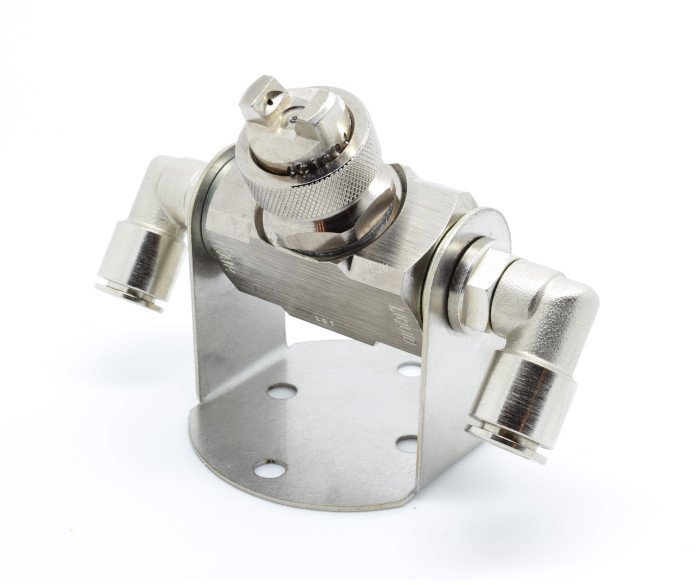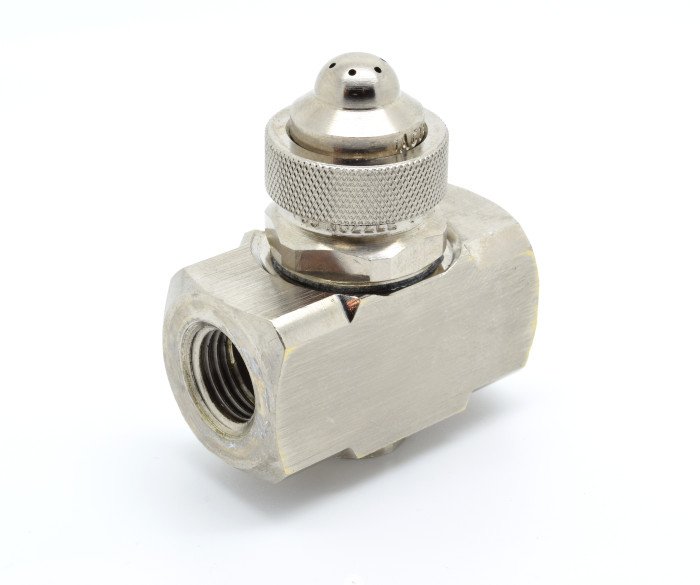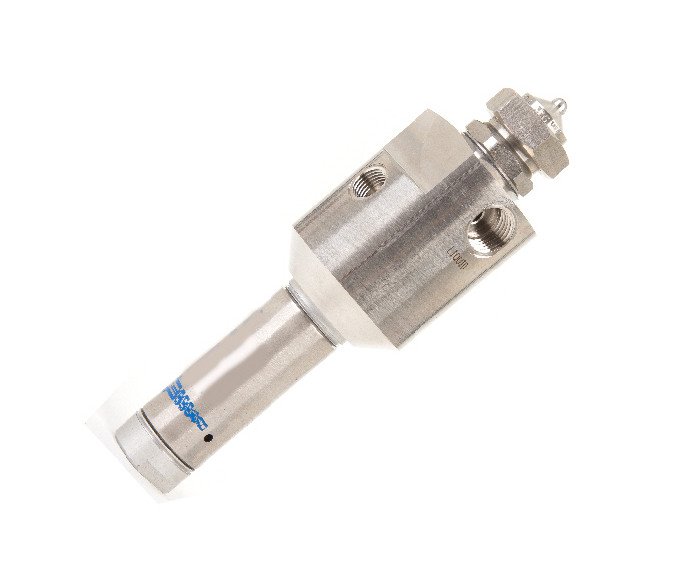Overview
Air Atomising Nozzles are twin fluid type spray nozzles, usually using compressed air and a liquid to create an atomised droplet. Available spray patterns within this range include flat fan, full cone and hollow cone. The nozzles are available in pressure design or gravity fed. The air atomising nozzle is suitable for spraying viscous liquids by using the energy in compressed air to shear the liquid and produce highly atomised sprays with relatively low flow rates.
There are numerous interchangeable components that can be assembled to achieve a variety of spraying patterns. A combination of the air cap and fluid cap together with setting pressures determine the resultant spray type.
In many installations the nozzle is supported by the rigid metal pipe that supplies air or liquid. There are several components which can provide support for the atomiser bodies when it isn’t appropriate to suspend the nozzle from piping: for example, when the nozzle will spray through the wall of a tank or duct, or when the air and liquid will be supplied through flexible tubing.
Air atomising nozzles are popular on continuous production lines where coating or moistening of a product is required on a repeatable basis. This is achieved using automatic clean out needles and shut-off valves built into the nozzle design, this ensures nozzle maintenance is kept to a minimum.
Low Flow Air Atomising
The XA nozzle system uses the energy in compressed air to produce highly atomised sprays at low flow rates. There are many interchangeable components that can be assembled to achieve a variety of spraying objectives.
Spray Set-Ups
XA nozzles produce eight distinctly different types of sprays, depending on which interchangeable air and fluid caps are selected. The spray type and flow rate are determined by the "set-up" - a specific combination of one air cap and one fluid cap.
Internal Mix Set-Ups
Liquid and air streams meet within the nozzle and are mixed together and expelled through the same orifice(s). This internal mixing means the streams are not independent; a change in air flow will affect the liquid flow. This makes precise metering of the liquid more difficult than with an External Mix Set-up. Internal Mix Set-ups are able to produce the finest atomisation of any of the XA set-ups, but they are generally not suitable for use with liquids which have a viscosity above 200 centipoise.
External Mix Set-Ups
The air and liquid streams exit the nozzle independently and are combined and mixed outside of the nozzle. Because there is no connection between the air and liquid lines within the nozzle, the air and liquid flow rates can be controlled independently, allowing precise metering of the liquid. The atomisation can be controlled by adjusting the air flow rate - more air produces finer atomisation. In most cases these set-ups do not atomise as finely as Internal Mix Set-ups. External Mix Set-ups may be used with liquids having a viscosity above 200 centipoise and for abrasive suspensions.
Siphon Set-Ups
Internal and External Mix Set-Ups require the liquid to be supplied to the nozzle under pressure from a municipal water supply, pump or pressure pot. Siphon Set-Ups use the flow of compressed air within the nozzle to siphon liquid from a container. Siphon Set-Ups are frequently used for spraying additives from a container without the use of a pump. They provide the lowest flow rates available in the XA series (as low as 0.38 lts/hr). They are generally not suitable for use with liquids having a viscosity above 200 centipoise.



